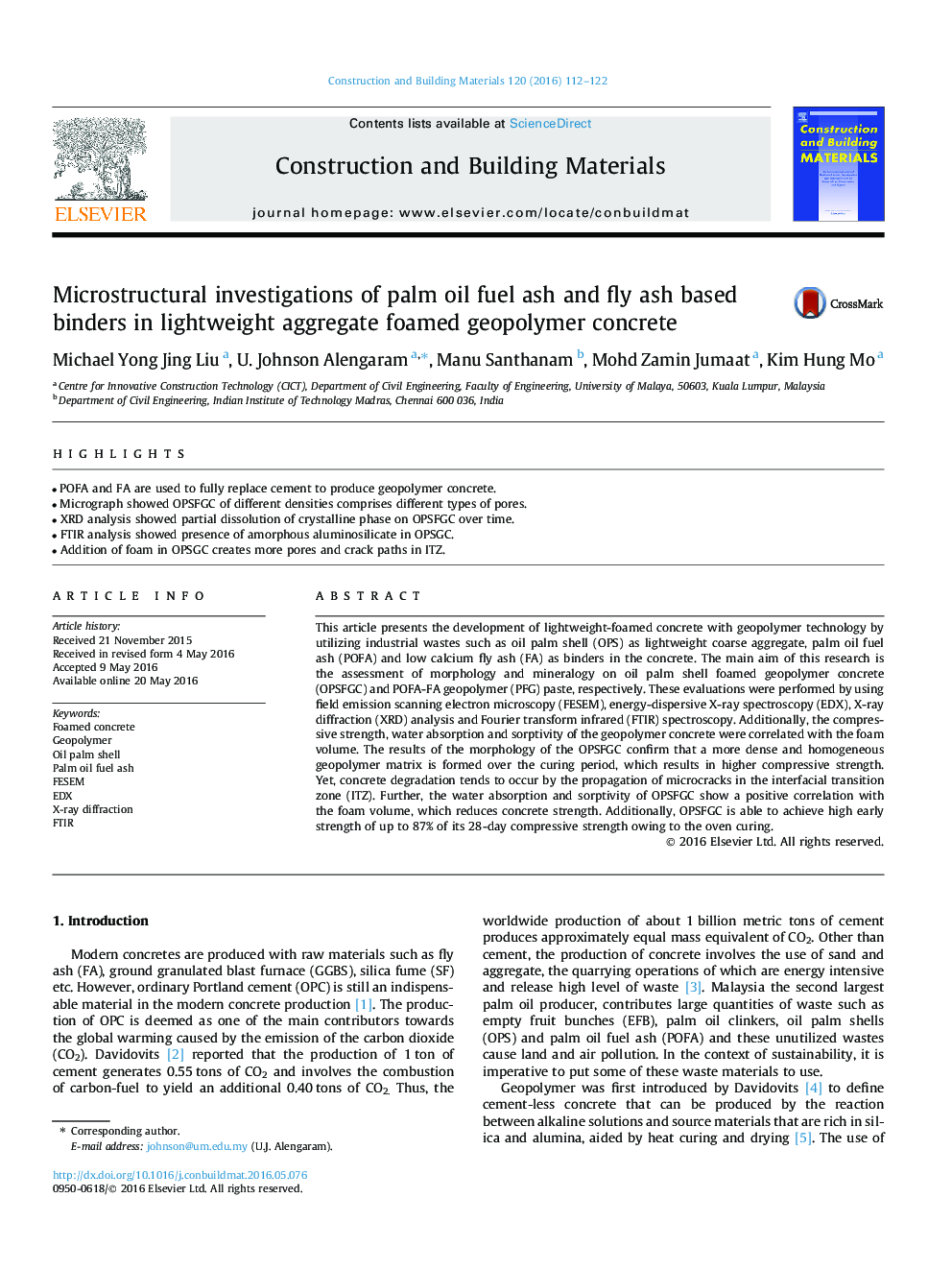| Article ID | Journal | Published Year | Pages | File Type |
|---|---|---|---|---|
| 255824 | Construction and Building Materials | 2016 | 11 Pages |
•POFA and FA are used to fully replace cement to produce geopolymer concrete.•Micrograph showed OPSFGC of different densities comprises different types of pores.•XRD analysis showed partial dissolution of crystalline phase on OPSFGC over time.•FTIR analysis showed presence of amorphous aluminosilicate in OPSGC.•Addition of foam in OPSGC creates more pores and crack paths in ITZ.
This article presents the development of lightweight-foamed concrete with geopolymer technology by utilizing industrial wastes such as oil palm shell (OPS) as lightweight coarse aggregate, palm oil fuel ash (POFA) and low calcium fly ash (FA) as binders in the concrete. The main aim of this research is the assessment of morphology and mineralogy on oil palm shell foamed geopolymer concrete (OPSFGC) and POFA-FA geopolymer (PFG) paste, respectively. These evaluations were performed by using field emission scanning electron microscopy (FESEM), energy-dispersive X-ray spectroscopy (EDX), X-ray diffraction (XRD) analysis and Fourier transform infrared (FTIR) spectroscopy. Additionally, the compressive strength, water absorption and sorptivity of the geopolymer concrete were correlated with the foam volume. The results of the morphology of the OPSFGC confirm that a more dense and homogeneous geopolymer matrix is formed over the curing period, which results in higher compressive strength. Yet, concrete degradation tends to occur by the propagation of microcracks in the interfacial transition zone (ITZ). Further, the water absorption and sorptivity of OPSFGC show a positive correlation with the foam volume, which reduces concrete strength. Additionally, OPSFGC is able to achieve high early strength of up to 87% of its 28-day compressive strength owing to the oven curing.
